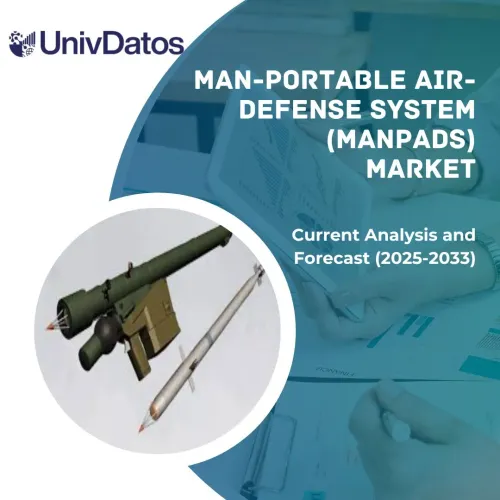- Home
- About Us
- Industry
- Services
- Reading
- Contact Us
Global Aircraft Display Market: Current Analysis and Forecast (2023-2030)
Emphasis on Type (Primary Flight Display, Multifunction Display, Engine-Indicating and Crew-alerting System Display, and Passenger Entertainment Display); Application (Commercial and Military) and Region/Country
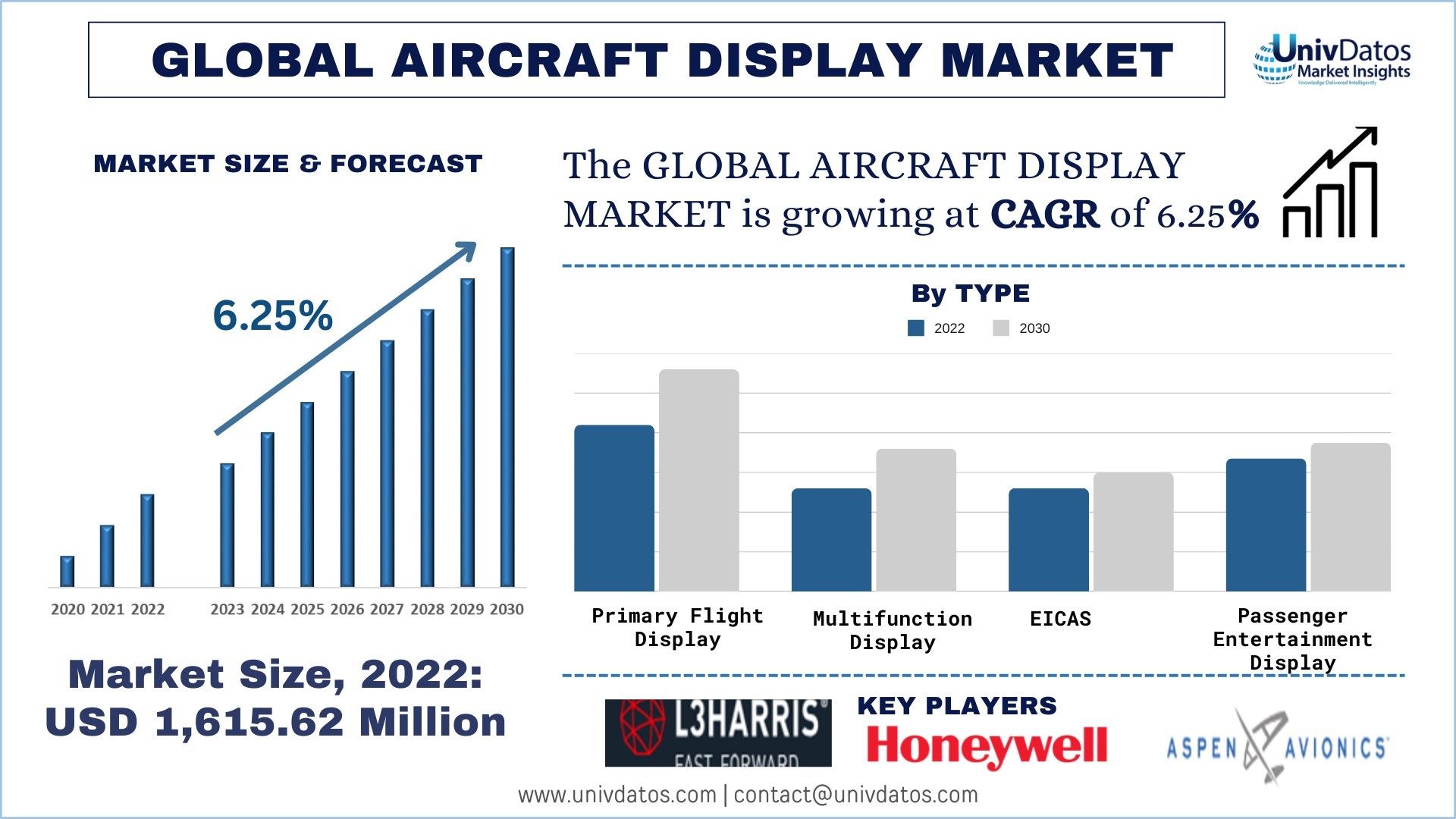
Aircraft Display Market Size & Forecast
The aircraft display market was valued at USD 1,615.62 Million and is expected to grow at a strong CAGR of around 6.25% during the forecast period (2023-2030) owing to rising air traffic worldwide and safety concerns.
Aircraft Display Market Analysis
An aircraft display is an electronic visual output device used in the cockpit of an aircraft to present flight data and information to the pilots. This Primary Flight Display (PFD) shows the primary flight instrumentation like airspeed, altitude, pitch and roll attitudes, heading, and other essential flight parameters in an integrated and easy-to-scan layout. The other displays such as Engine Indication and Crew Alerting System (EICAS) Display, provide information about the aircraft’s engines, systems status, and any abnormalities or alerts that require pilot action. These displays simplify pilot workflow by combining various instruments into one compact screen, enhancing situational awareness, reducing workload, and improving safety during flight.
The market growth is being driven by several key factors, such as the rise in air travel, increasing government regulations, and advancements in technology. The aviation sector is continuously adopting state-of-the-art technologies to improve safety, efficiency, and data analysis for flights. Additionally, the global increase in air travel due to rising disposable incomes and tourism has led to a surge in air traffic. For instance, a report from IATA revealed a 36.9% growth in total traffic (measured in revenue passenger kilometers) in 2023 compared to 2022. Moreover, the Airports Council International predicts that 2024 will mark a significant milestone in global passenger traffic recovery, with an estimated 9.4 billion passengers surpassing the pre-pandemic levels of 2019. As a result, there is a high demand for aircraft displays worldwide.
Aircraft Display Market Trends
Adoption of Advanced Touchscreen Technology
A significant trend that has been noticed in the Aircraft Display market after 2021 is the growing acceptance of advanced touchscreen technology in cockpit displays. In the past, aircraft cockpits were furnished with physical buttons and knobs that pilots used to interact with navigation systems, flight instruments, and other crucial controls. Nevertheless, the progress made in touchscreen technology has opened possibilities for a cockpit interface that is more user-friendly and intuitive. The main reason for the implementation of advanced touchscreen technology in aircraft displays is the desire to improve cockpit efficiency and enhance the pilot’s experience. Touchscreens provide a more efficient and interactive method for pilots to navigate through different systems and data. Additionally, touchscreen displays can be tailored to offer real-time information, which enhances situational awareness and decision-making during flight operations. For instance,
- Airbus A350: The Airbus A350 incorporates advanced touchscreen displays in its cockpit, allowing pilots to interact with the aircraft’s systems more efficiently.
- Boeing 787 Dreamliner: The Boeing 787 Dreamliner features touchscreen technology in its flight deck, providing pilots with a modernized interface for flight operations.
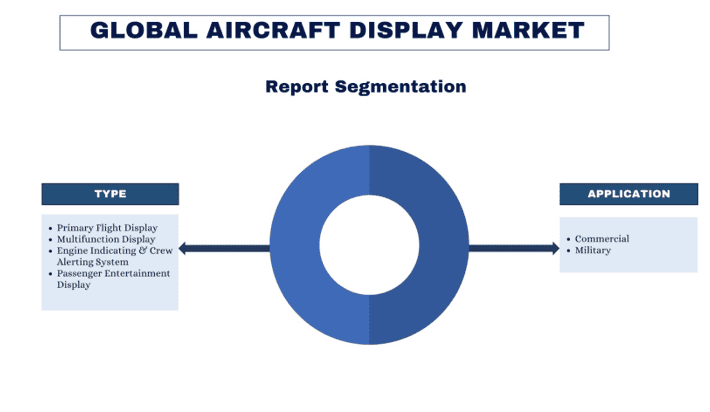
North America Dominated the Aircraft Display Market
Within North America, the United States holds a major share of the market. The major factors boosting the market’s growth in the country are the increasing number of commercial and military fleet sizes, government regulations and mandates, growing focus on R&D, a well-established aviation industry, and the presence of several market players.
The aviation industry in North America remains steadfast in prioritizing safety, continuously striving to minimize accidents and improve post-accident investigations. To achieve this, regulatory bodies like the Federal Aviation Administration (FAA) consistently enhance safety requirements, leading to the necessity for more advanced displays. A recent FAA regulation (2023) serves as a clear demonstration of this commitment, mandating extended data recording durations (25 hours) for displays installed on newly manufactured small aircraft. Additionally, the growing fleet size in the region has generated an unprecedented demand for displays. For instance, the North America region currently boasts the highest number of commercial fleets, with 8,468 in 2022, and this number is projected to reach 9,691 by 2041. The ongoing modernization of aircraft fleets in North America is another factor driving the demand for displays. The ongoing modernization of aircraft fleets in North America is another factor driving the demand for the display market. Companies like Honeywell have specialized products which could alter the cockpit display. For instance, Honeywell is offering a cost-effective unit exchange program for older DU-1080 forward cockpit displays for business jet and commercial helicopter operators.
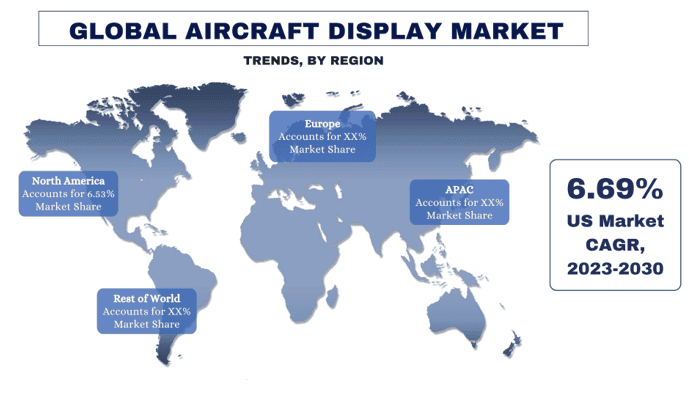
Aircraft Display Industry Overview
The aircraft display market is competitive as well as concentrated, with the presence of very few global and international market players. The key players are adopting different growth strategies to enhance their market presence, such as partnerships, agreements, collaborations, new product launches, geographical expansions, and mergers and acquisitions. Some of the major players operating in the market are Astronautics Corporation of America, Honeywell International Inc., Aspen Avionics, Inc., Garmin Ltd., GRT Avionics, L3Harris Technologies, Inc., Thales, Avidyne Corporation, Elbit Systems Ltd., Diehl Stiftung & Co. KG, and Genesys Aerosystems.
Aircraft Display Market News
- The 2022 Aircraft Electronics Association Convention showcased several new avionics technologies and displays for aircraft. Some highlights include, Garmin introduced the GTC 600 series touchscreen controllers for its integrated flight decks, providing pilots with a more modern and intuitive way to control avionics systems.
- Avidyne unveiled its new IFD550 touchscreen navigator which integrates communications, navigation, and other avionics functions into a single display.
- uAvionix introduced the tailBeaconX aircraft safety solution which uses ADS-B technology to make aircraft more visible on cockpit displays.
- Qatar Airways previewed its forthcoming Boeing 777X business class suite which features a personal closed-door design and large entertainment screen.
Aircraft Display Market Report Coverage
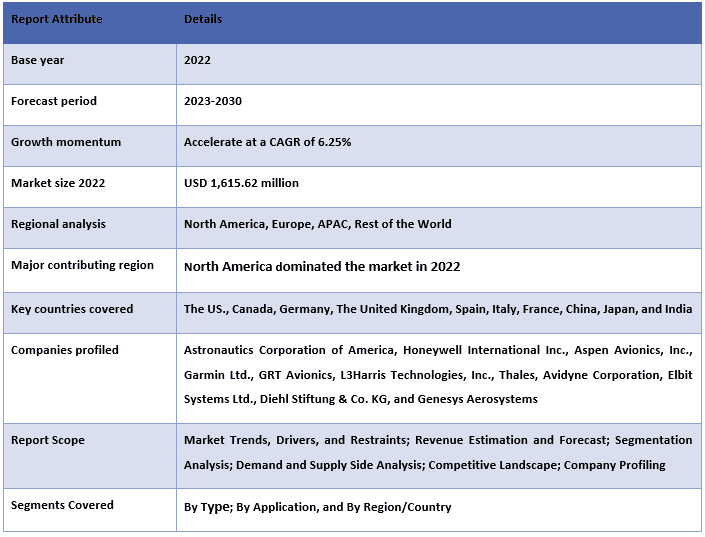
Reasons to buy this report:
- The study includes market sizing and forecasting analysis validated by authenticated key industry experts.
- The report presents a quick review of overall industry performance at one glance.
- The report covers an in-depth analysis of prominent industry peers with a primary focus on key business financials, product portfolios, expansion strategies, and recent developments.
- Detailed examination of drivers, restraints, key trends, and opportunities prevailing in the industry.
- The study comprehensively covers the market across different segments.
- Deep dive regional level analysis of the industry.
Customization Options:
The global aircraft display market can further be customized as per the requirement or any other market segment. Besides this, UMI understands that you may have your own business needs, hence feel free to contact us to get a report that completely suits your requirements.
Table of Content
Research Methodology for the Aircraft Display Market Analysis (2023-2030)
Analyzing the historical market, estimating the current market, and forecasting the future market of the global aircraft display market were the three major steps undertaken to create and analyze the adoption of aircraft display in major regions globally. Exhaustive secondary research was conducted to collect the historical market numbers and estimate the current market size. Secondly, to validate these insights, numerous findings and assumptions were taken into consideration. Moreover, exhaustive primary interviews were also conducted, with industry experts across the value chain of the global aircraft display market. Post assumption and validation of market numbers through primary interviews, we employed a top-down/bottom-up approach to forecasting the complete market size. Thereafter, market breakdown and data triangulation methods were adopted to estimate and analyze the market size of segments and sub-segments of the industry pertains to. Detailed methodology is explained below:
Analysis of Historical Market Size
Step 1: In-Depth Study of Secondary Sources:
Detail secondary study was conducted to obtain the historical market size of the aircraft display market through company internal sources such as annual reports & financial statements, performance presentations, press releases, etc., and external sources including journals, news & articles, government publications, competitor publications, sector reports, third-party database, and other credible publications.
Step 2: Market Segmentation:
After obtaining the historical market size of the aircraft display market, we conducted a detailed secondary analysis to gather historical market insights and share for different segments & sub-segments for major regions. Major segments are included in the report type and application. Further country-level analyses were conducted to evaluate the overall adoption of testing models in that region.
Step 3: Factor Analysis:
After acquiring the historical market size of different segments and sub-segments, we conducted a detailed factor analysis to estimate the current market size of the aircraft display market. Further, we conducted factor analysis using dependent and independent variables such as type and application of the aircraft display market. A thorough analysis was conducted for demand and supply-side scenarios considering top partnerships, mergers and acquisitions, business expansion, and product launches in the aircraft display market sector across the globe.
Current Market Size Estimate & Forecast
Current Market Sizing: Based on actionable insights from the above 3 steps, we arrived at the current market size, key players in the global aircraft display market, and market shares of the segments. All the required percentage shares split, and market breakdowns were determined using the above-mentioned secondary approach and were verified through primary interviews.
Estimation & Forecasting: For market estimation and forecast, weights were assigned to different factors including drivers & trends, restraints, and opportunities available for the stakeholders. After analyzing these factors, relevant forecasting techniques i.e., the top-down/bottom-up approach were applied to arrive at the market forecast for 2030 for different segments and sub-segments across the major markets globally. The research methodology adopted to estimate the market size encompasses:
- The industry’s market size, in terms of revenue (USD) and the adoption rate of the aircraft display market across the major markets domestically
- All percentage shares, splits, and breakdowns of market segments and sub-segments
- Key players in the global aircraft display market in terms of products offered. Also, the growth strategies adopted by these players to compete in the fast-growing market.
Market Size and Share Validation
Primary Research: In-depth interviews were conducted with the Key Opinion Leaders (KOLs) including Top Level Executives (CXO/VPs, Sales Head, Marketing Head, Operational Head, Regional Head, Country Head, etc.) across major regions. Primary research findings were then summarized, and statistical analysis was performed to prove the stated hypothesis. Inputs from primary research were consolidated with secondary findings, hence turning information into actionable insights.
Split of Primary Participants in Different Regions
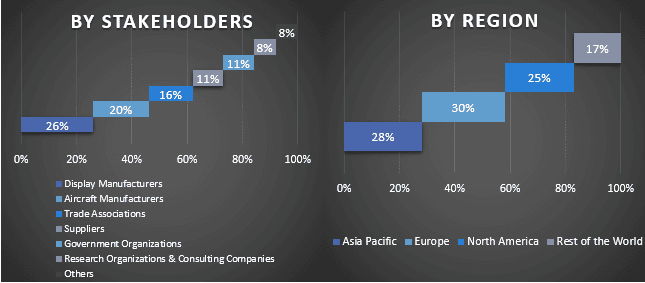
Market Engineering
The data triangulation technique was employed to complete the overall market estimation and to arrive at precise statistical numbers for each segment and sub-segment of the global aircraft display market. data was split into several segments & sub-segments post studying various parameters and trends in the areas of the type and application in the global aircraft display market.
The main objective of the Global Aircraft Display Market Study
The current & future market trends of the global aircraft display market were pinpointed in the study. Investors can gain strategic insights to base their discretion for investments on the qualitative and quantitative analysis performed in the study. Current and future market trends determined the overall attractiveness of the market at a regional level, providing a platform for the industrial participant to exploit the untapped market to benefit from a first-mover advantage. Other quantitative goals of the studies include:
- Analyze the current and forecast market size of the aircraft display market in terms of value (USD). Also, analyze the current and forecast market size of different segments and sub-segments.
- Segments in the study include areas of the type and application.
- Define and analysis of the regulatory framework for the aircraft display
- Analyze the value chain involved with the presence of various intermediaries, along with analyzing customer and competitor behaviors of the industry.
- Analyze the current and forecast market size of the aircraft display market for the major region.
- Major countries of regions studied in the report include Asia Pacific, Europe, North America, and the Rest of the World
- Company profiles of the aircraft display market and the growth strategies adopted by the market players to sustain in the fast-growing market.
- Deep dive regional level analysis of the industry
Frequently Asked Questions FAQs
Q1: What is the current market size and growth potential of the aircraft display market?
Q2: What are the driving factors for the growth of the aircraft display market?
Q3: Which segment has the largest share of the aircraft display market by type?
Q4: What are the emerging technologies and trends in the aircraft display market?
Q5: Which region will dominate the aircraft display market?
Related Reports
Customers who bought this item also bought





